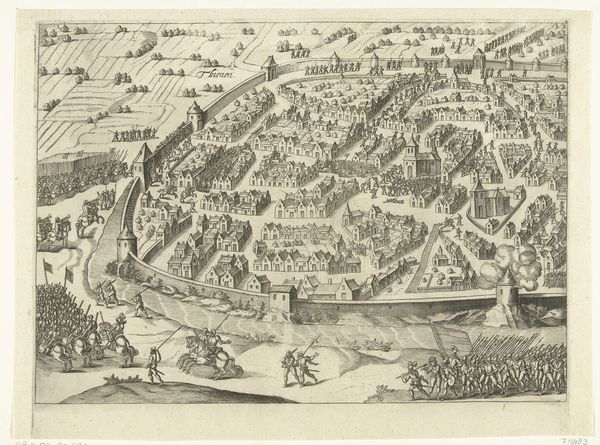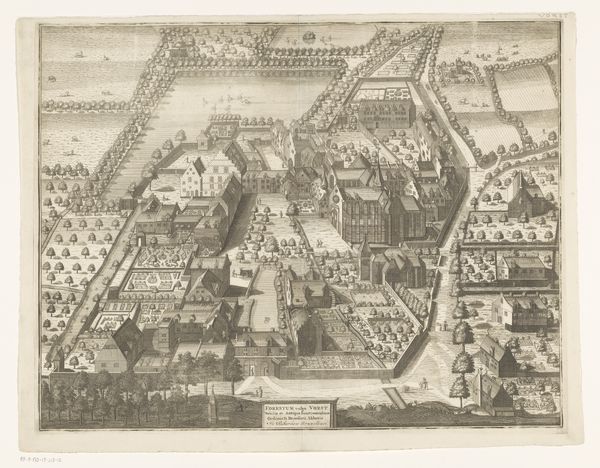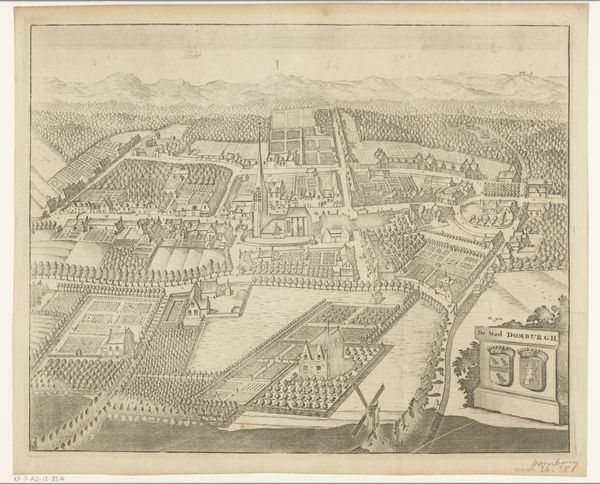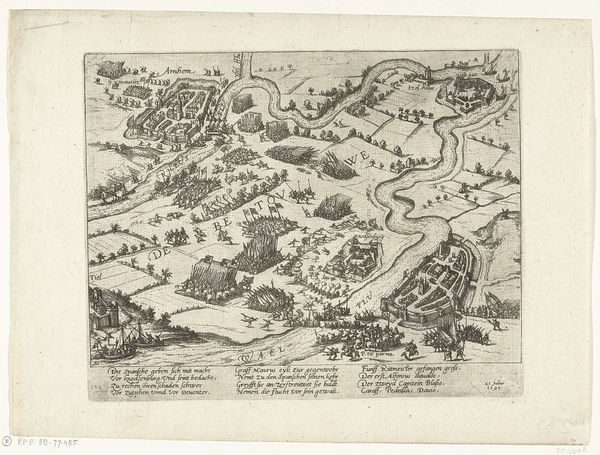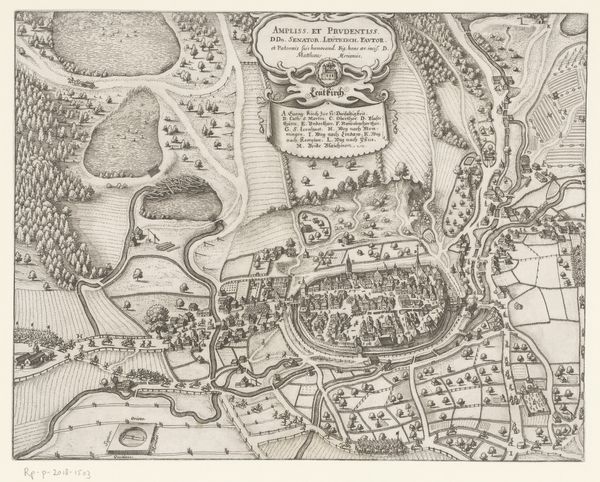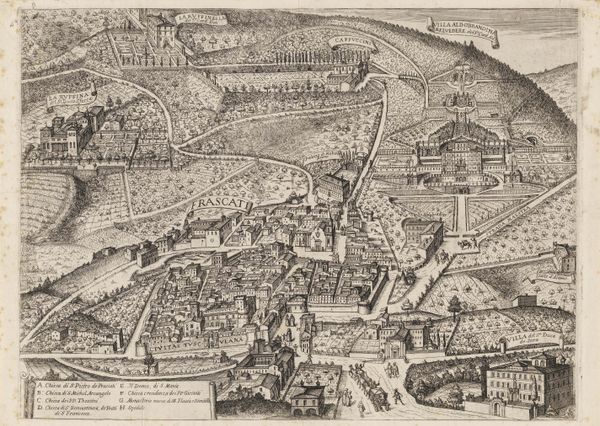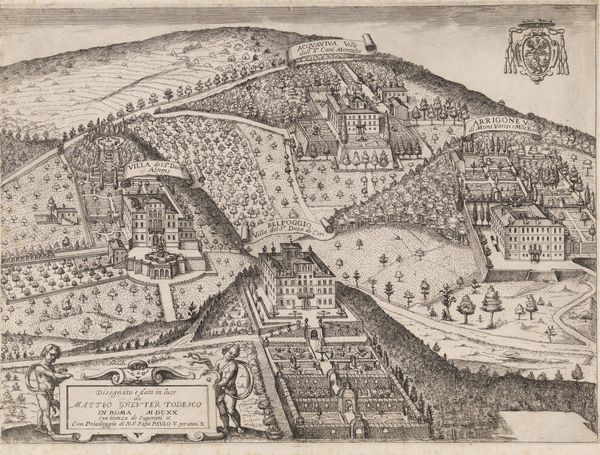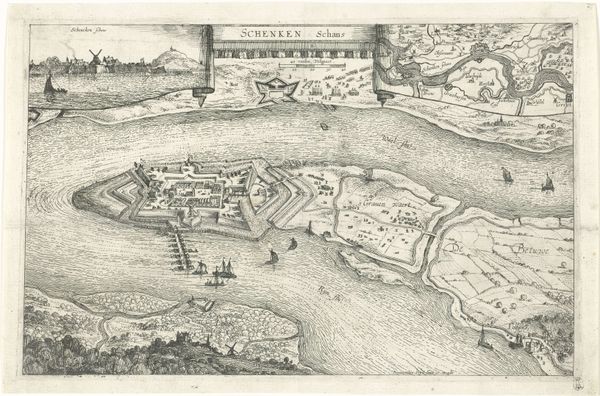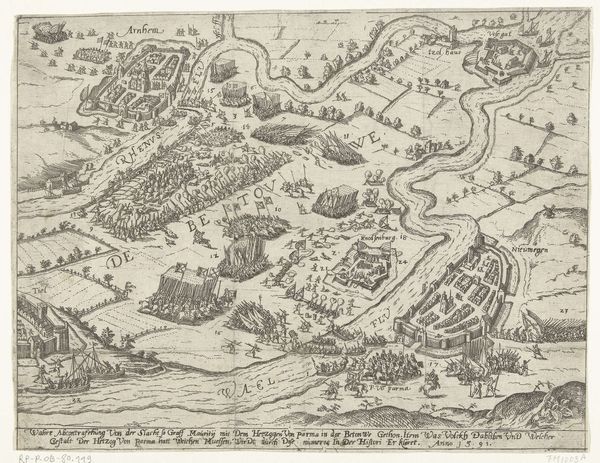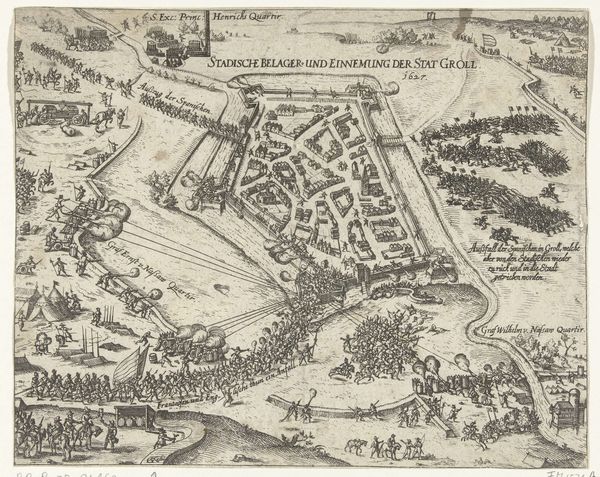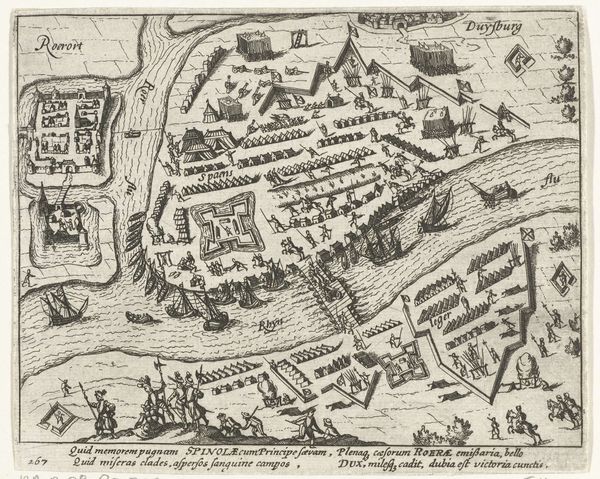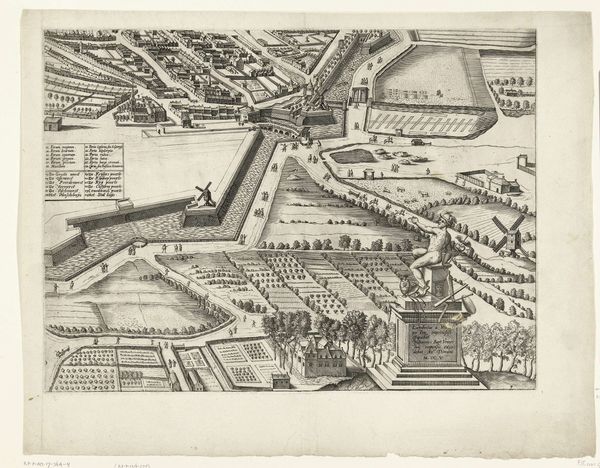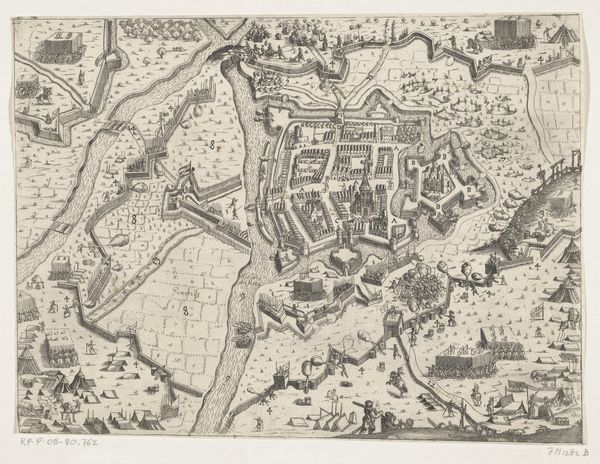
print, engraving, architecture
#
baroque
# print
#
landscape
#
cityscape
#
engraving
#
architecture
Dimensions: 380 mm (height) x 482 mm (width) (bladmaal)
Curator: This is Matthäus Greuter's "View of Frascati and surroundings," an engraving that likely dates between 1566 and 1638. It’s part of the collection at the SMK, Statens Museum for Kunst. Editor: It’s fascinating. All these villas, laid out with geometric precision across the landscape. A powerful statement of order over nature through architectural means. I wonder how large it really is. Curator: Scale is crucial here. Greuter, and indeed his patrons, were interested in showcasing Frascati as a seat of power and influence, particularly of the noble Roman families and the Church. This wasn’t just a landscape; it was a projection of dominance. Editor: Dominance meticulously etched in metal. Think about the labor involved in creating this print: the skills needed to manipulate the burin, the hours bent over the copperplate...and the socioeconomic systems enabling Greuter to access those materials. Curator: Precisely. Prints like these were part of a broader system of patronage. Powerful families like the Borghese and the Aldobrandini, who are depicted here in villa form, used these prints to broadcast their wealth, sophistication, and connections. Editor: It's the controlled spaces I keep noticing, how cultivation and design replace what likely was, previously, wild growth. The materials reflect those choices. The buildings contrast to me with the rugged lines describing nature beyond the edges of their manufactured paradises. Curator: And consider the dissemination of these images. They circulated widely, shaping perceptions of Rome and its environs among elites across Europe, further solidifying Rome’s cultural authority. Editor: Thinking about its current location at the SMK, its function shifts again. From advertisement to artwork to…historical document? A commodity for contemplation, removed from its initial practical, even propagandistic, purpose. Curator: That’s right. We’re now invited to critically engage with this view and question whose vision of Frascati is being presented. Editor: To question the role the very material played in constructing, reinforcing, and exporting it. I leave more conscious of the interplay between image-making, class, and place.
Comments
No comments
Be the first to comment and join the conversation on the ultimate creative platform.
